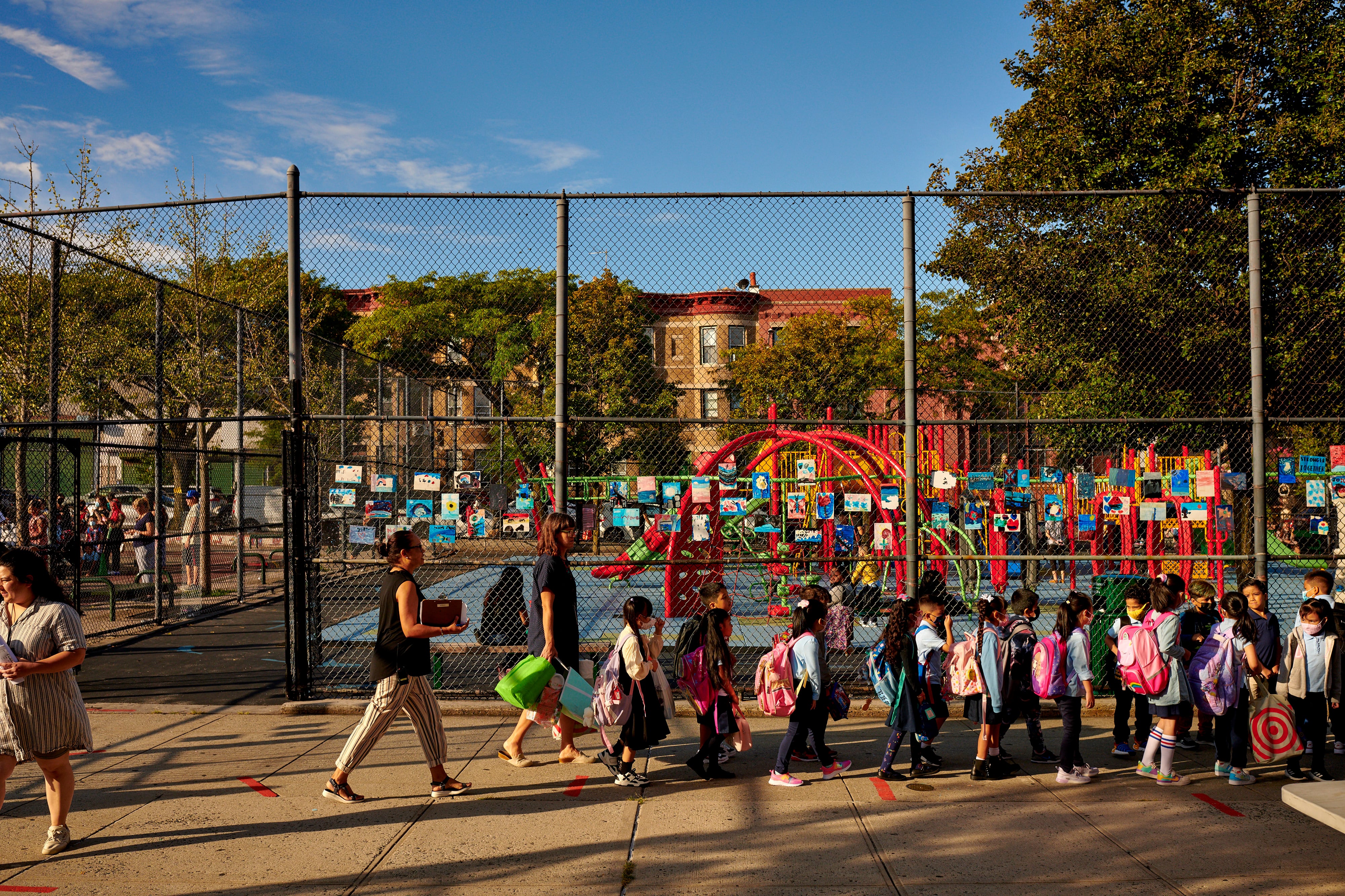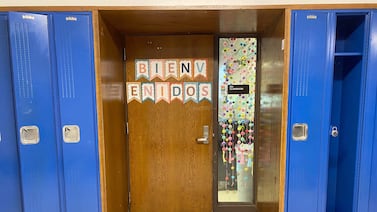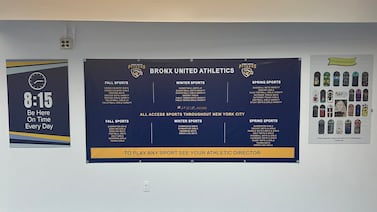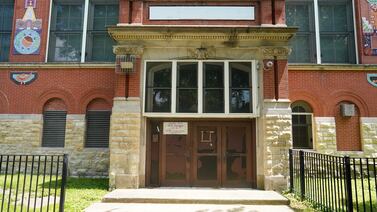Even as many New York City schools reel from this summer’s budget cuts, some principals are bracing for another financial hit.
For the first time since the start of the pandemic, schools with enrollment shortfalls will have to pay back money midway through the school year. Education department budget directors warned many schools last week that they may have to let go of, or “excess,” teachers to achieve hundreds of thousands of dollars in savings through what’s known as the “midyear budget adjustment,” multiple principals told Chalkbeat.
Some principals sent teachers packing weeks into the new school year, while others warned staff that more cuts could be coming. Still others are opting not to make any more cuts this year and take on a budget deficit. But that decision could worsen their long-term financial outlook and bring additional spending restrictions for the rest of this school year.
“Principals are kind of between this rock and a hard place,” said one Brooklyn school leader who will likely owe more than $200,000 to the education department this school year, and who spoke on the condition of anonymity. “It’s a significant amount of money.
“What I’ve chosen to do is not excess anybody and see where the cookie crumbles,” said the Brooklyn principal.
Principals receive their midyear budget adjustment —which takes away money from schools whose enrollment falls short of projections and adds money to those with more students than predicted — typically each fall after enrollment counts are finalized on Oct. 31, and again later in the winter.
The midyear adjustment is meant to address any student roster imbalances from the budgets issued in June, which are based on education department projections for the coming school year. When schools end up with fewer students on their rosters than projected or have students with extremely low attendance rates they can lose per pupil funding for those kids midway through the school year. That amounts to more than $4,000 a student for a general education high school student and up to nearly $12,000 a head for students with disabilities, who receive extra funding, according to DOE figures.
The midyear clawback was paused for the past two school years because of the pandemic, and its return could bring more financial pain and disruption for some schools still reeling from the effects of a first round of enrollment-based budget cuts over the summer.
At some schools, the midyear belt tightening has already taken a toll — even though it’s only about a month into the school year.
The principal of P.S. 222 in Jackson Heights, Queens, told parents last week that “due to…declining enrollment it has become necessary to reorganize our first grade classes at this time. The reorganization entails the elimination of your child’s class,” according to a copy of the principal’s letter posted by Susan Kang, a parent in the eliminated class.
Kang said her son was devastated to lose the teacher he’d spent weeks getting to know, and worried that the disruption would increase behavior challenges and slow down academic progress.
“Young children this age bond with their teachers very quickly,” Kang said. “I imagine there’s going to be more behavioral issues because of this change … it seems unnecessarily cruel.”
At one Bronx middle school, four teachers were excessed just this week, the teachers union confirmed.
“It’s really disruptive to the kids,” said one staffer at the school, who spoke on the condition of anonymity. “And then you have the rest of the staff, now we have four less people for coverages.”
The fact that the departures happened nearly a month into the year, after the school had already spent weeks “establishing routines,” made it particularly jarring, the staffer added.
The education department declined to say how much money schools with enrollment shortfalls are expected to have to pay back or how many teachers have been excessed since the school year started. Excessed teachers remain on the education department payroll, but have to find a job at a different school.
Education department spokesperson Jenna Lyle said “under the terms of our labor agreements, teachers must be notified by Sept. 30 that they may be required to take a role at another school due to enrollment shifts. If there is the possibility of an enrollment-driven staffing adjustment, principals often utilize this notification as a way to responsibly plan ahead.”
But long-time Queens high school principal Mike Athy, who recently retired after 14 years, said in his experience it’s “unusual” for so many principals to be grappling with the possibility of excessing as part of the midyear budget adjustment.
“In my particular case, I never issued a September excess letter in 14 years,” he said, adding that he’s heard from several principals in recent weeks who said they were encouraged to issue excess notices.
For schools facing big enrollment shortfalls, the midyear clawbacks can force principals to choose among what feels like a set of bad options.
One Bronx principal was notified two weeks ago that he will owe the education department about $750,000 due to enrolling roughly 75 fewer students than expected. That would mean excessing seven to eight teachers who he just hired this summer after a wave of departures. He’s planning to shift the debt to next year, even though district officials have urged him against it.
“It would literally destroy the school’s programs, not to mention excess all the new teachers we brought in who have brought fresh energy, fresh blood and new life to the school,” said the principal, who runs one of the city’s community schools, which serve larger shares of high-needs students.
Other principals said they’re also determined not to excess any staff midway through the school year, and are planning to carry forward a budget deficit into next year instead. Some school leaders are waiting and hoping that the education department will forgive the debt, as happened last year.
A few principals are pounding the pavement, trying to recruit new students before the Oct. 31 enrollment count.
The Bronx principal said since receiving a letter about his $750,000 deficit, about 10 new students have enrolled, bringing his debt down by roughly $100,000. In hopes of enrolling more children, he plans to spend the rest of the month promoting the school “on social media, getting brochures, getting flyers on to the streets.”
But taking on a budget deficit comes with its own risks, said Athy, the former principal.
Education department budget officials need to approve the arrangement, and can impose restrictions like limiting spending on after-school programs for schools that go into the red, Athy said.
Still, for many principals, that’s a more appealing prospect than cutting staff midway through the school year.
On the other end of the enrollment stick, schools with more students than projected get extra funding through the midyear adjustment. But the extra cash comes late enough into the school year that it can be difficult to spend effectively, Athy said.
It can be difficult to hire new teachers midway through the year, and plugging new hires into a schedule that’s already set can cause more disruption.
Making matters more complicated, the education department often doesn’t announce whether schools with budget surpluses can roll their extra money into next year until the spring, upping the pressure on principals to spend the cash right away.
“If you’re a principal and beat the projection … you don’t know whether or not you should roll that forward into the next fiscal year, or … buy all the copy paper in North America,” Athy said.
If you are having trouble viewing this form, go here.
Reema Amin contributed.
Michael Elsen-Rooney is a reporter for Chalkbeat New York, covering NYC public schools. Contact Michael at melsen-rooney@chalkbeat.org.








